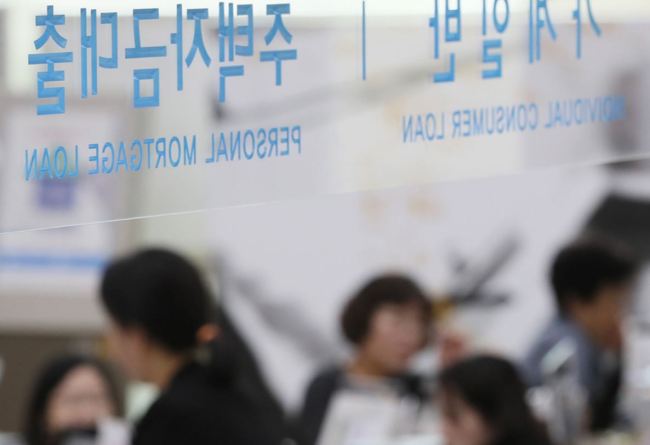[News Focus] Korea’s benchmark rate stays under 2% for 4 years
By Kim Yon-sePublished : April 11, 2019 - 15:43
SEJONG -- South Korea’s key interest rate slid below 2 percent for the first time in history in March 2015, when the Monetary Policy Committee of the Bank of Korea lowered it to 1.75 percent.
After further dipping to an all-time low of 1.25 percent in June 2016, the benchmark rate has hovered under 2 percent for the 49th consecutive month. It was set at 1.75 percent in November 2018 and has not changed since then.
After further dipping to an all-time low of 1.25 percent in June 2016, the benchmark rate has hovered under 2 percent for the 49th consecutive month. It was set at 1.75 percent in November 2018 and has not changed since then.

Compared to 3.25 percent in June 2011 and 5.25 percent in August 2008, the low-rate era has generated a variety of concerns and side effects over the past few years.
Investors have shifted their focus to the real estate maket, making large-scale huge investments since 2014, when the seven-member committee -- including BOK Gov. Lee Ju-yeol -- began taking a dovish stance.
The central bank slashed the benchmark rate five times during Lee’s term after he took office in April 2014 -- by 25 basis points to 2.25 percent in August 2014, to 2 percent in October 2014, to 1.75 percent in March 2015, to 1.5 percent in June 2015 and 1.25 percent in June 2016.
Between 2014 and 2017, many people purchased apartments, backed by mortgage loans amid lower lending rates coupled with eased regulations initiated by the former Park Geun-hye administration.
The BOK’s rate cuts, in addition to drastic deregulation by the Finance Ministry, Land Ministry and Financial Services Commission, led to a surge in mortgage loans issued by commercial banks.
While the previous policy was reportedly aimed at reinvigorating the economy, excessive loans resulted in heavy household debt.
The outstanding mortgage loans have sharply restricted household consumption, which has become a critical barrier for the nation’s economic growth.
Among the 36 members of the Organization for Economic Development and Cooperation, Korea is estimated to be ranked 19th in terms of gross domestic product growth last year, with a rate of 2.67 percent. Its growth ranking was 13th in 2017 and 11th in 2016.
“This shows a limit in boosting the economy by pushing forward low interest rates,” said a research analyst in Yeouido, Seoul. “Korea’s base rate should have been normalized in line with the rapid hikes in the US in recent years.”
Backtracking from its previous quantitative easing, the US Federal Reserve has continued to raise its benchmark rate since late 2015. The US rate, which stood at 0-0.25 percent per annum in 2015, has climbed to 2.25-2.5 percent in three years.
Though there were a series of warnings from economists over capital outflows and the Korean currency’s weakness versus the US dollar as the US rate surpassed Korea’s rate in March 2018, the BOK has hesitated to raise the base rate.
Between late 2015 and 2018, the US increased its key rate eight times and Korea lowered it once more by 25 basis points to a record low of 1.25 percent, and later raised it only two times. The interest gap between the two countries has widened to 75 basis points -- 2.5 percent (the upper level for the US) versus 1.75 percent.
Experts say that given this, the BOK needs to speed up rate hikes to catch up with the US and curb property speculation as Seoul apartment prices continue to be at an abnormally high level.

Despite this, there are some economists who have a contrarian view and are calling for further rate cuts amid the sluggish economy. They argue that a dovish position is also being advocated by some rate-setters in the US and European Union.
Though Gov. Lee downplayed the possibility of a rate cut, he has also not raised the necessity of raising it in his recent remarks before lawmakers and reporters.
Most market analyst predict that the BOK will keep the base rate untouched at 1.75 percent during the next rate-setting meeting of the Monetary Policy Committee, slated for April 18.
The Federal Open Market Committee is sceduled to meet on April 30-May 1 to decide on the key rate.
Though the possibility that the FOMC will raise the rate is low, five more meetings are scheduled this year starting from June, an analyst pointed out. “Any hawkish remarks from the Fed chair (Jerome Powell) could deal a severe blow to Korea,” he said.
By Kim Yon-se (kys@heraldcorp.com)


![[Exclusive] Korean military set to ban iPhones over 'security' concerns](http://res.heraldm.com/phpwas/restmb_idxmake.php?idx=644&simg=/content/image/2024/04/23/20240423050599_0.jpg&u=20240423183955)
![[AtoZ into Korean mind] Humor in Korea: Navigating the line between what's funny and not](http://res.heraldm.com/phpwas/restmb_idxmake.php?idx=644&simg=/content/image/2024/04/22/20240422050642_0.jpg&u=)



![[Graphic News] 77% of young Koreans still financially dependent](http://res.heraldm.com/phpwas/restmb_idxmake.php?idx=644&simg=/content/image/2024/04/22/20240422050762_0.gif&u=)






![[Exclusive] Korean military to ban iPhones over security issues](http://res.heraldm.com/phpwas/restmb_idxmake.php?idx=652&simg=/content/image/2024/04/23/20240423050599_0.jpg&u=20240423183955)



![[Today’s K-pop] Ateez confirms US tour details](http://res.heraldm.com/phpwas/restmb_idxmake.php?idx=642&simg=/content/image/2024/04/23/20240423050700_0.jpg&u=)